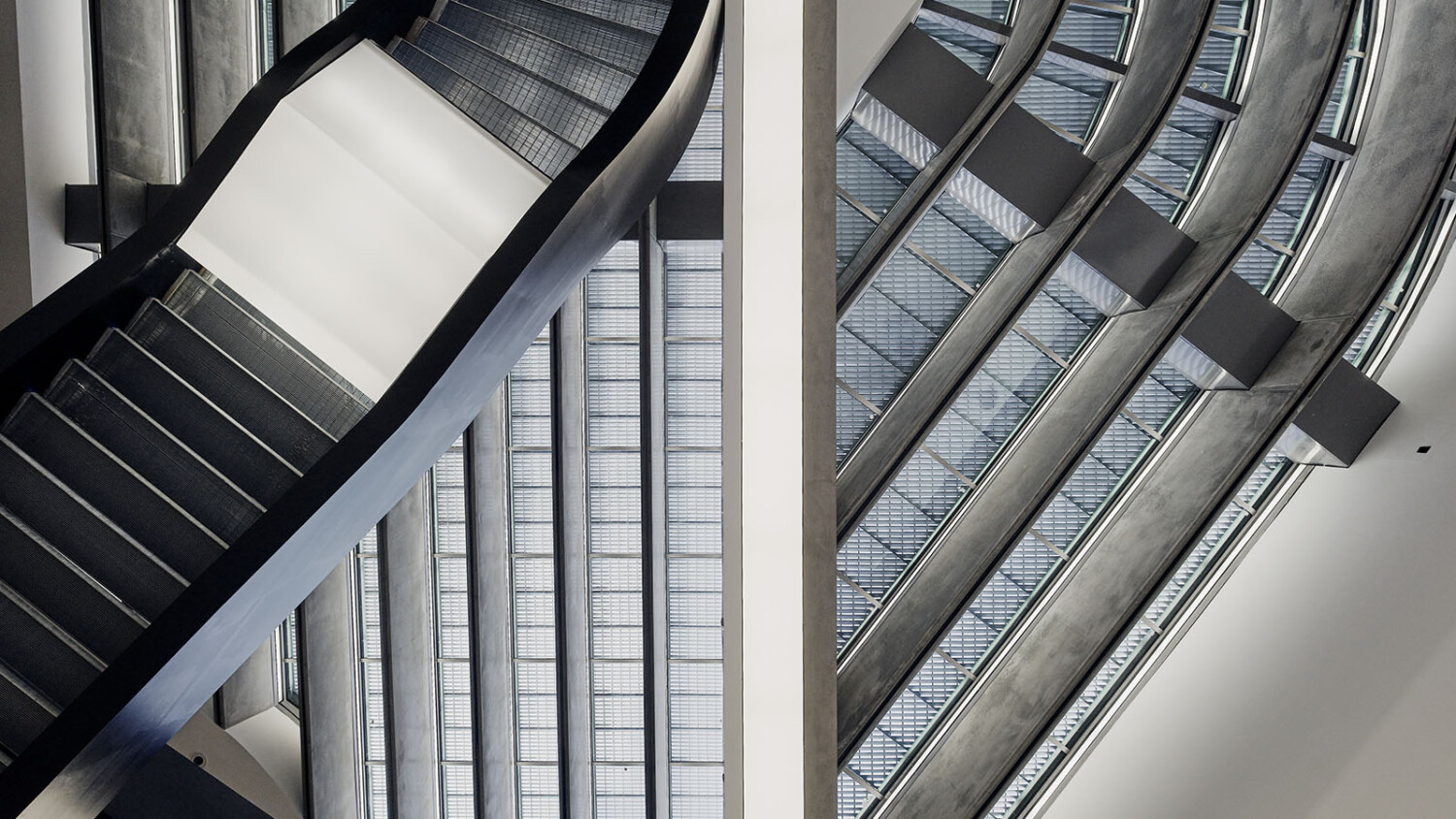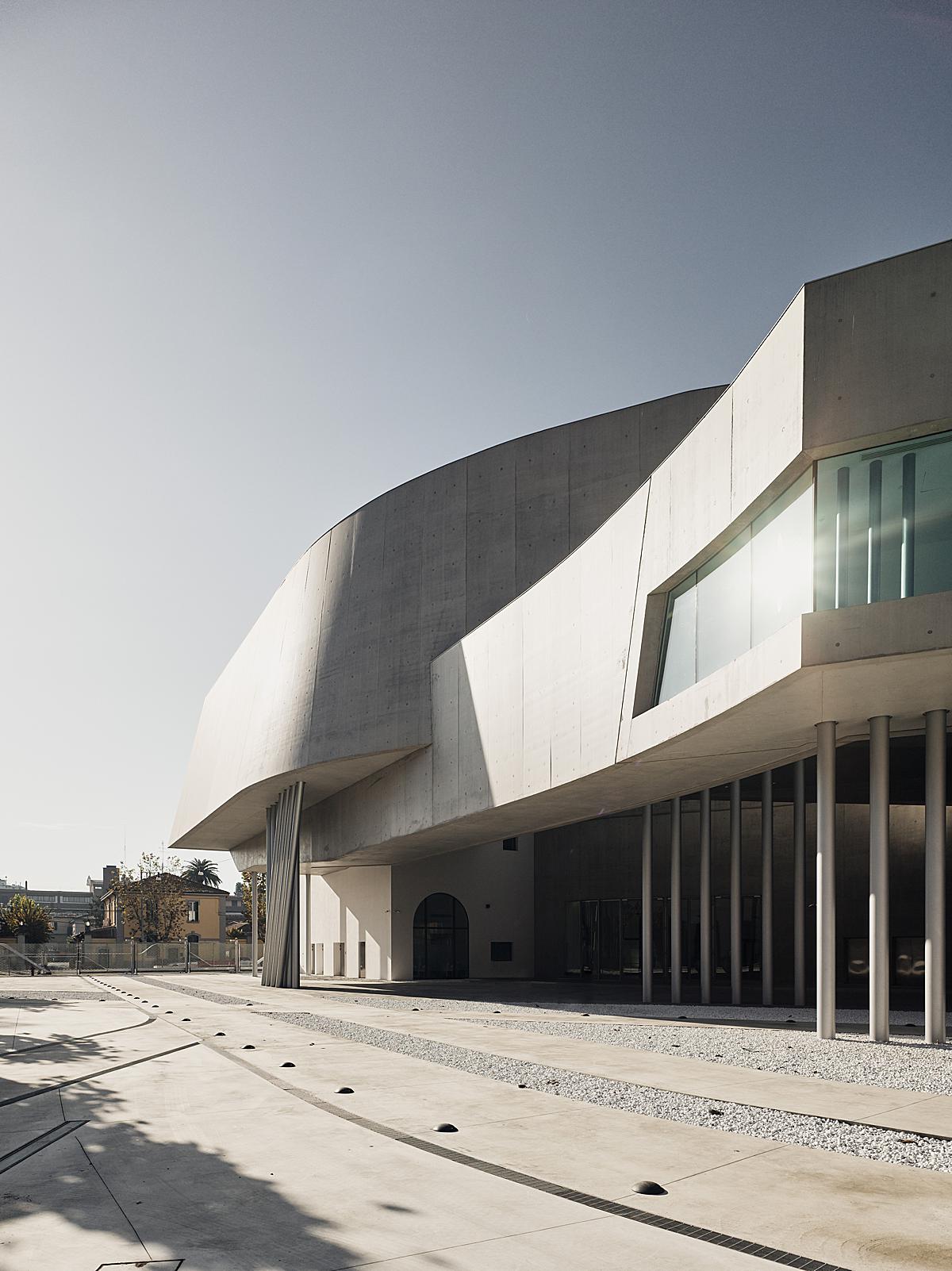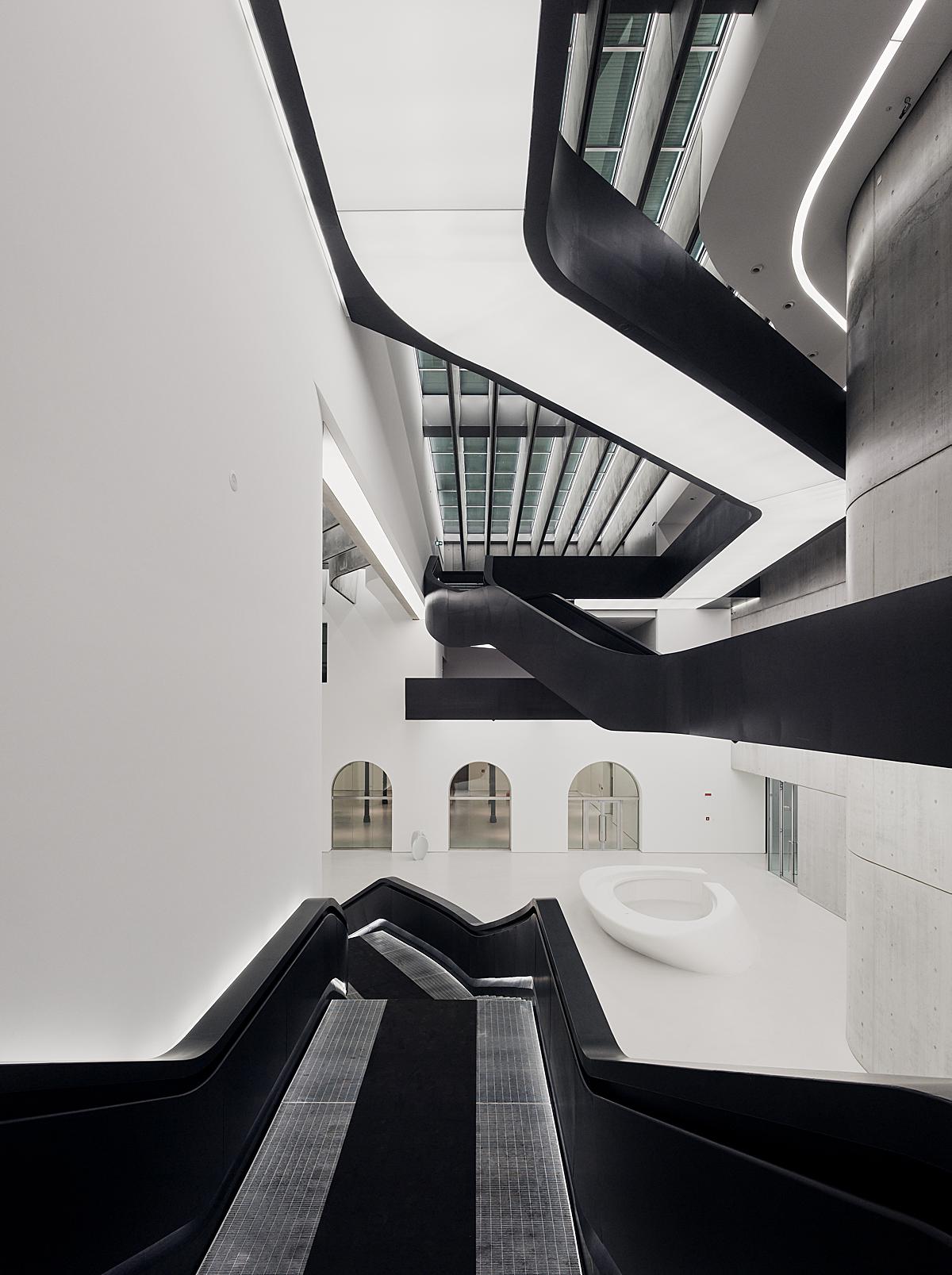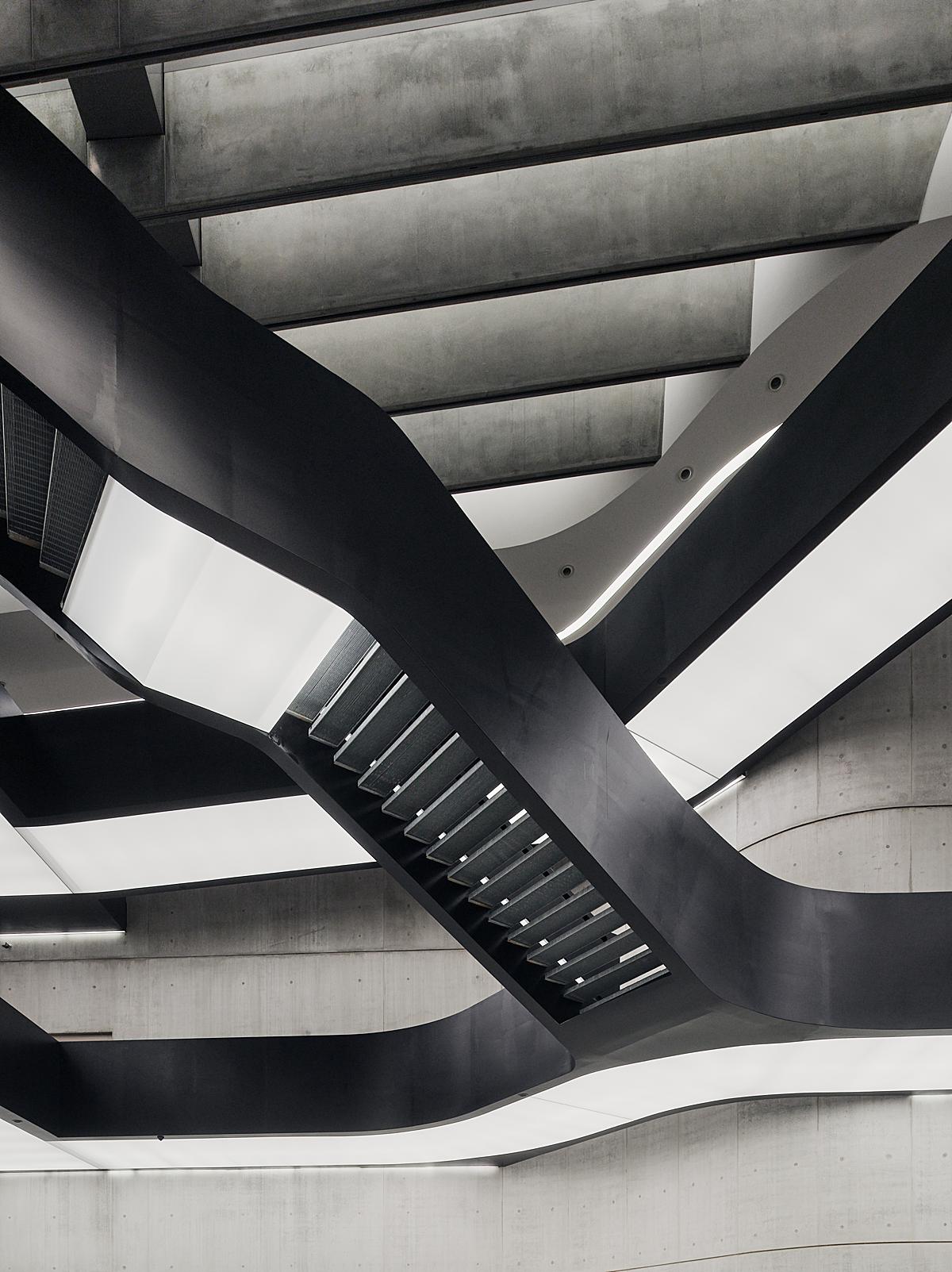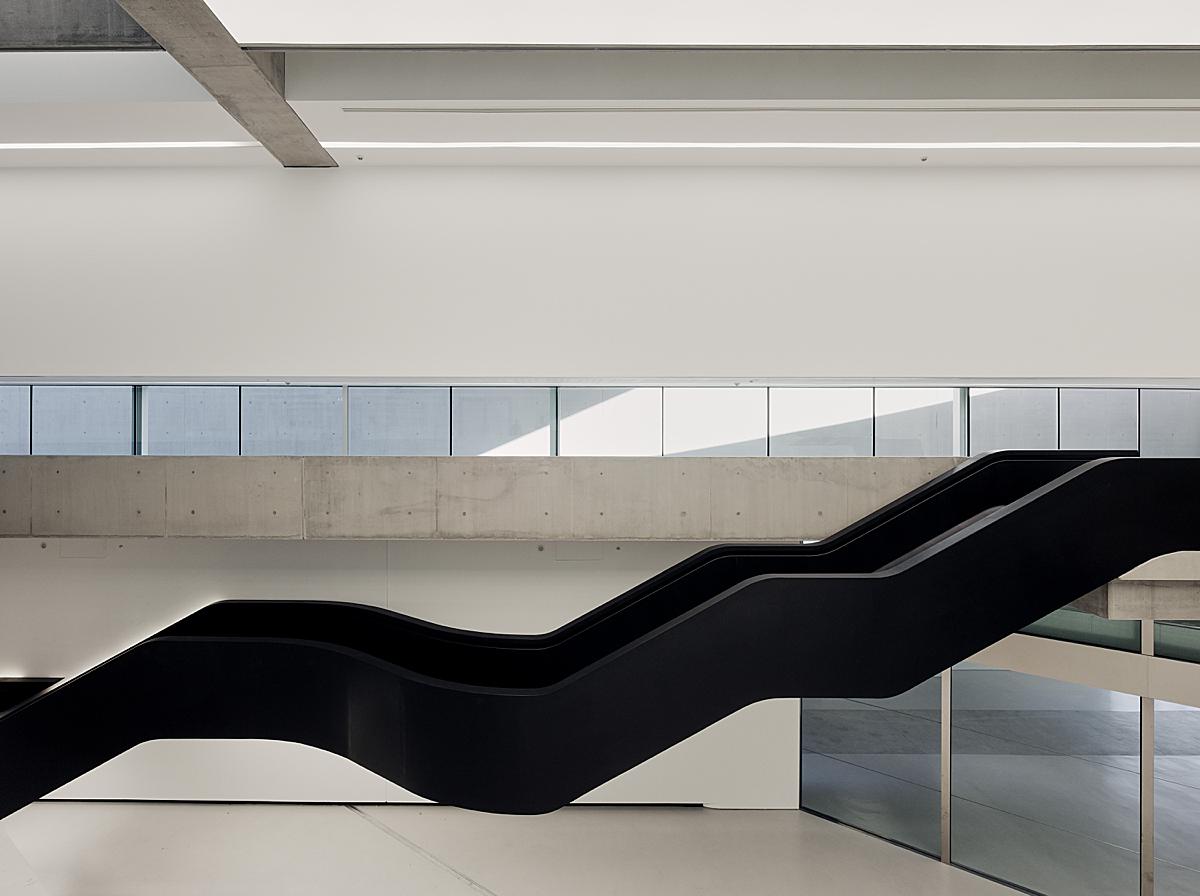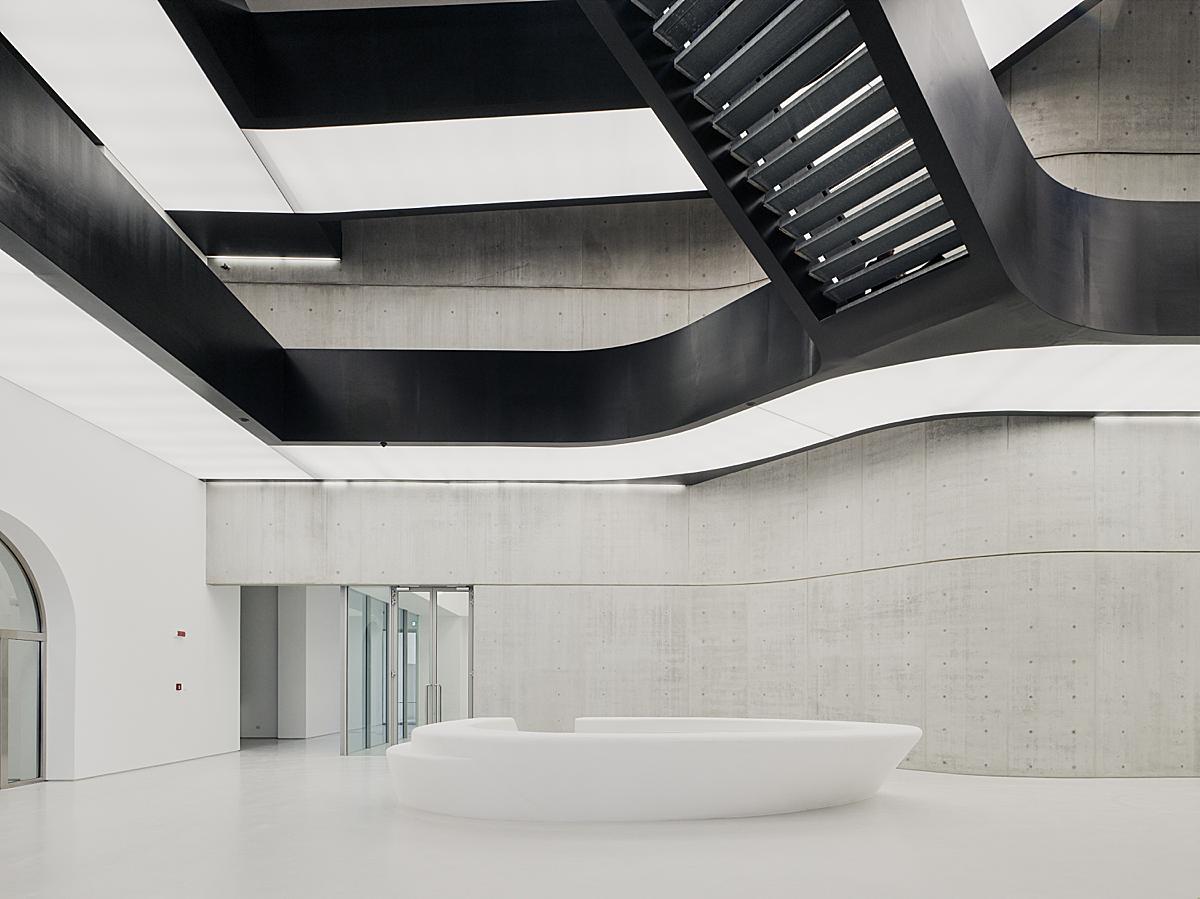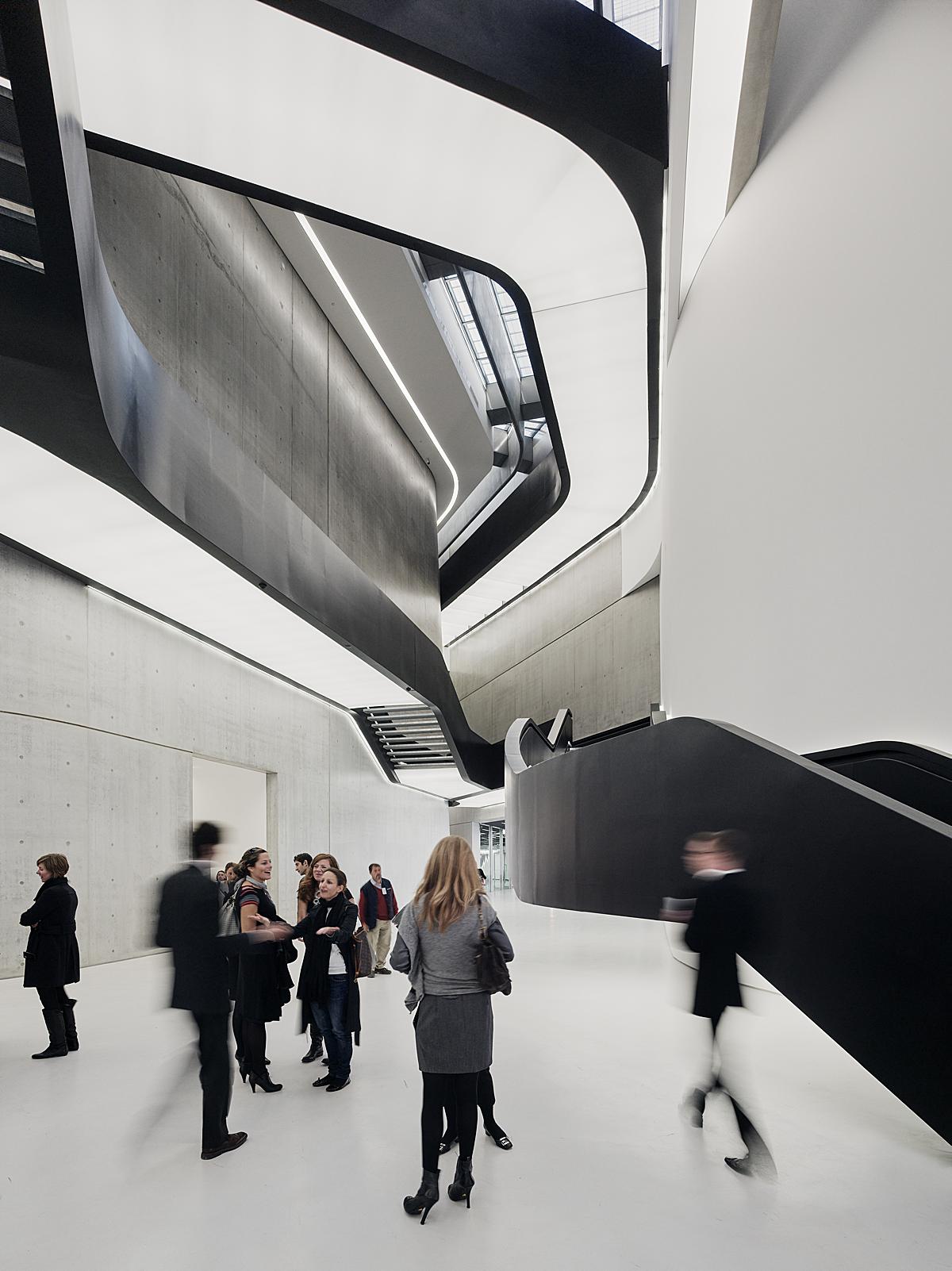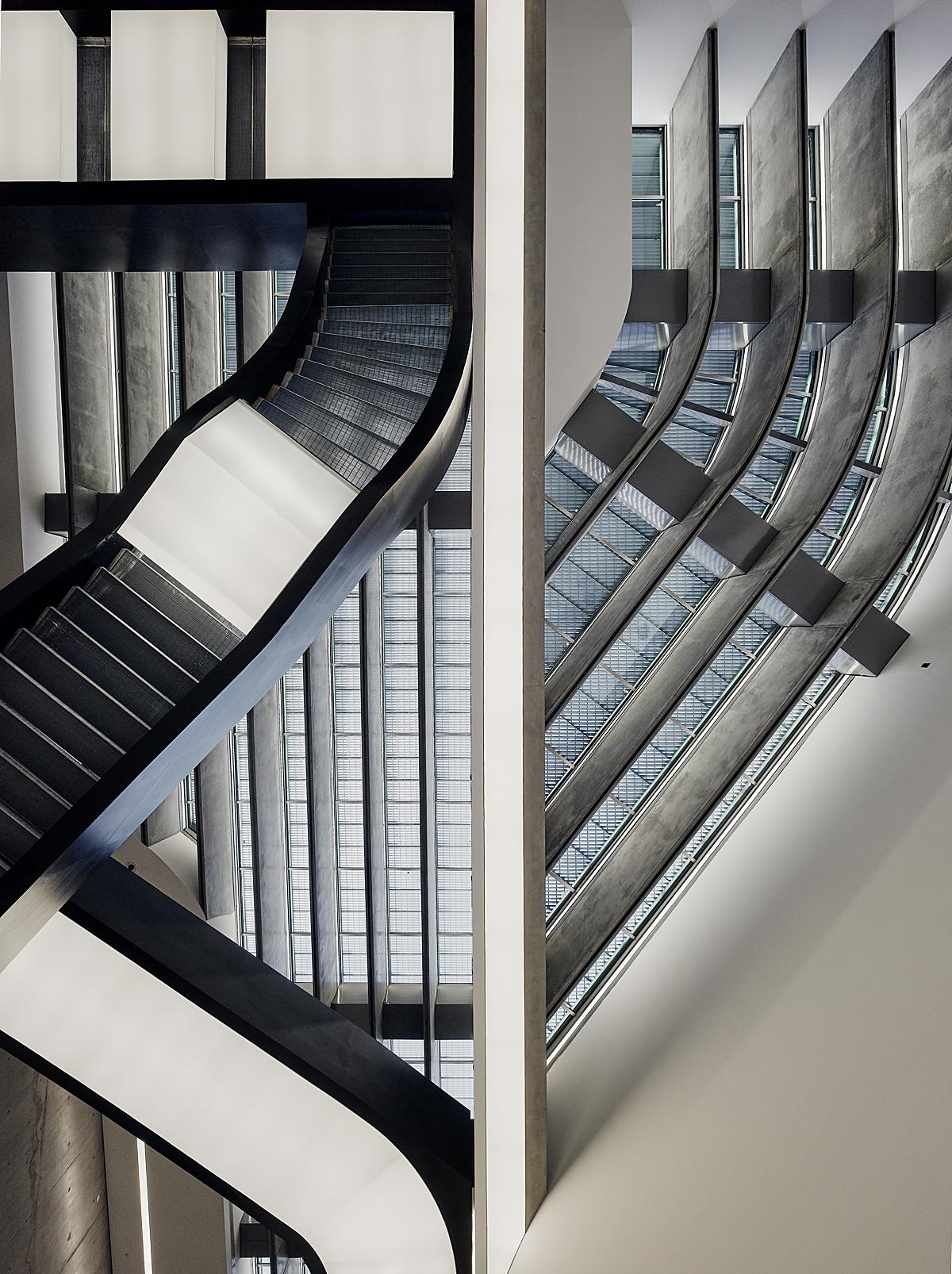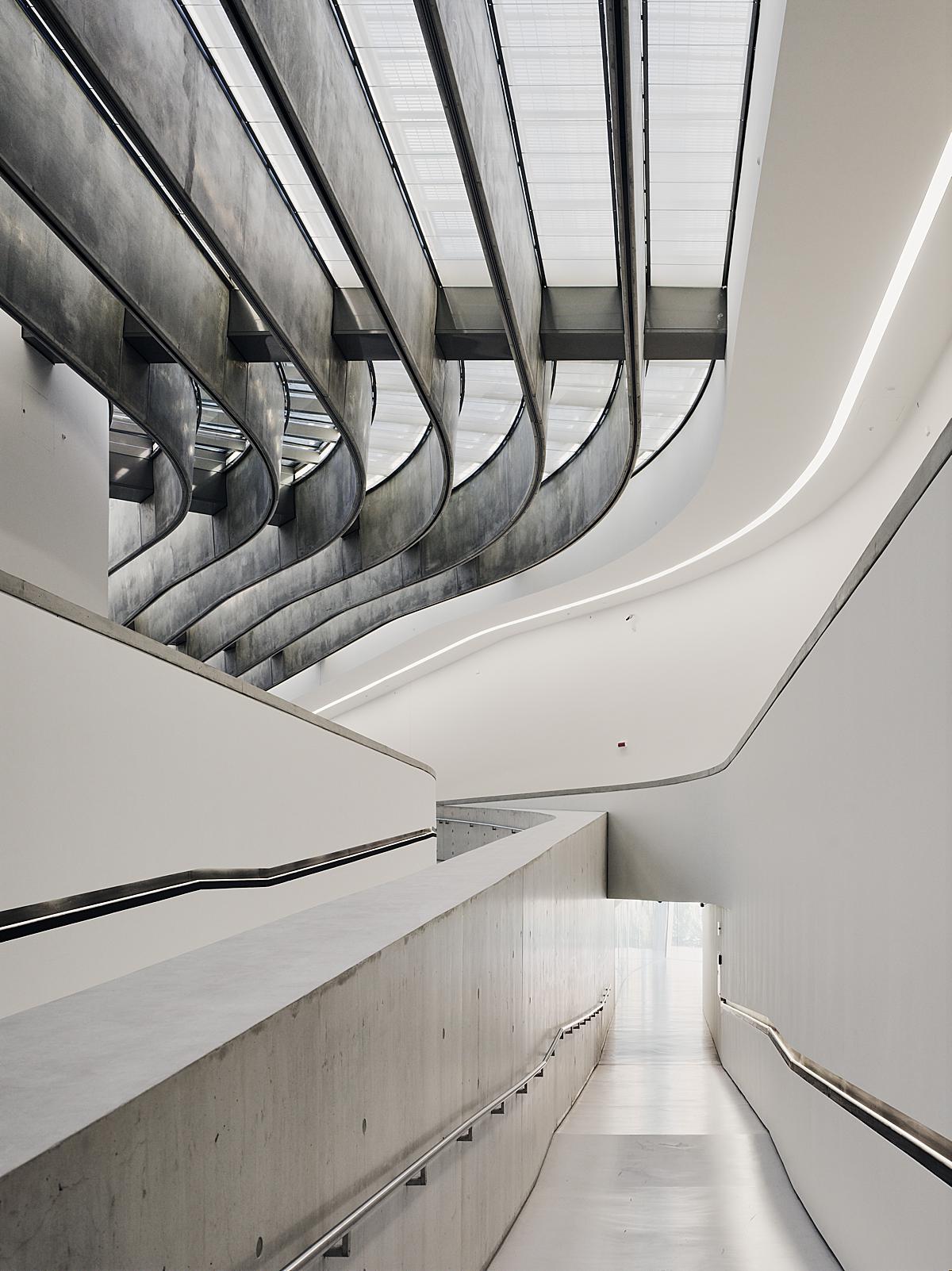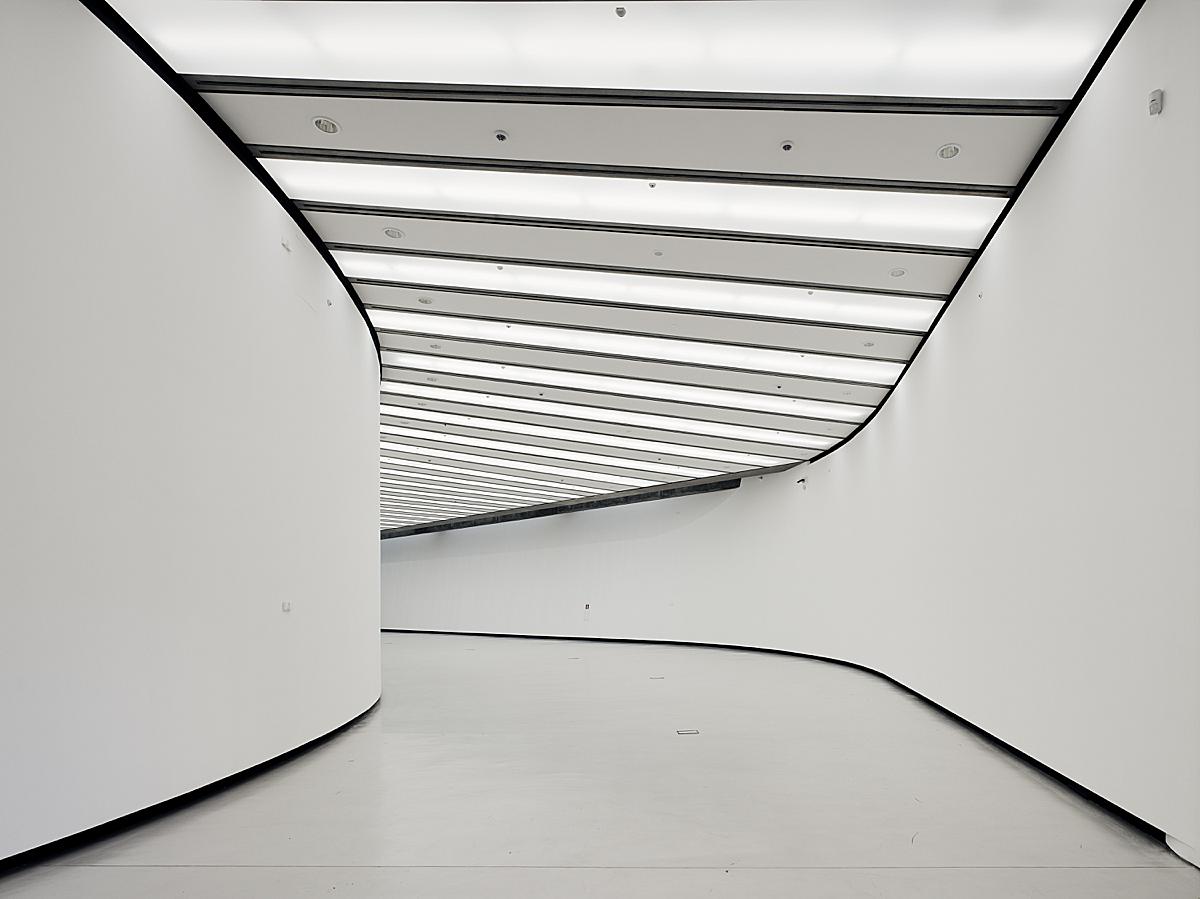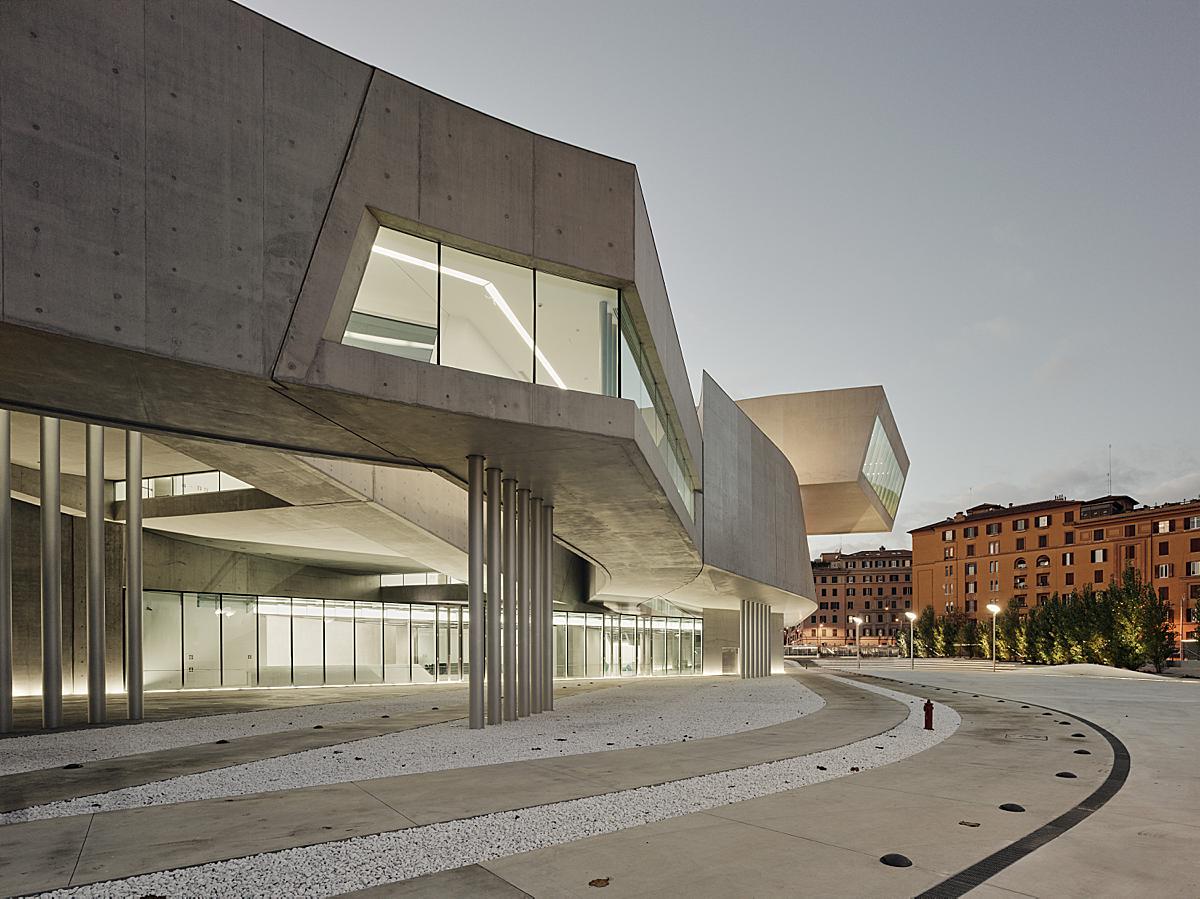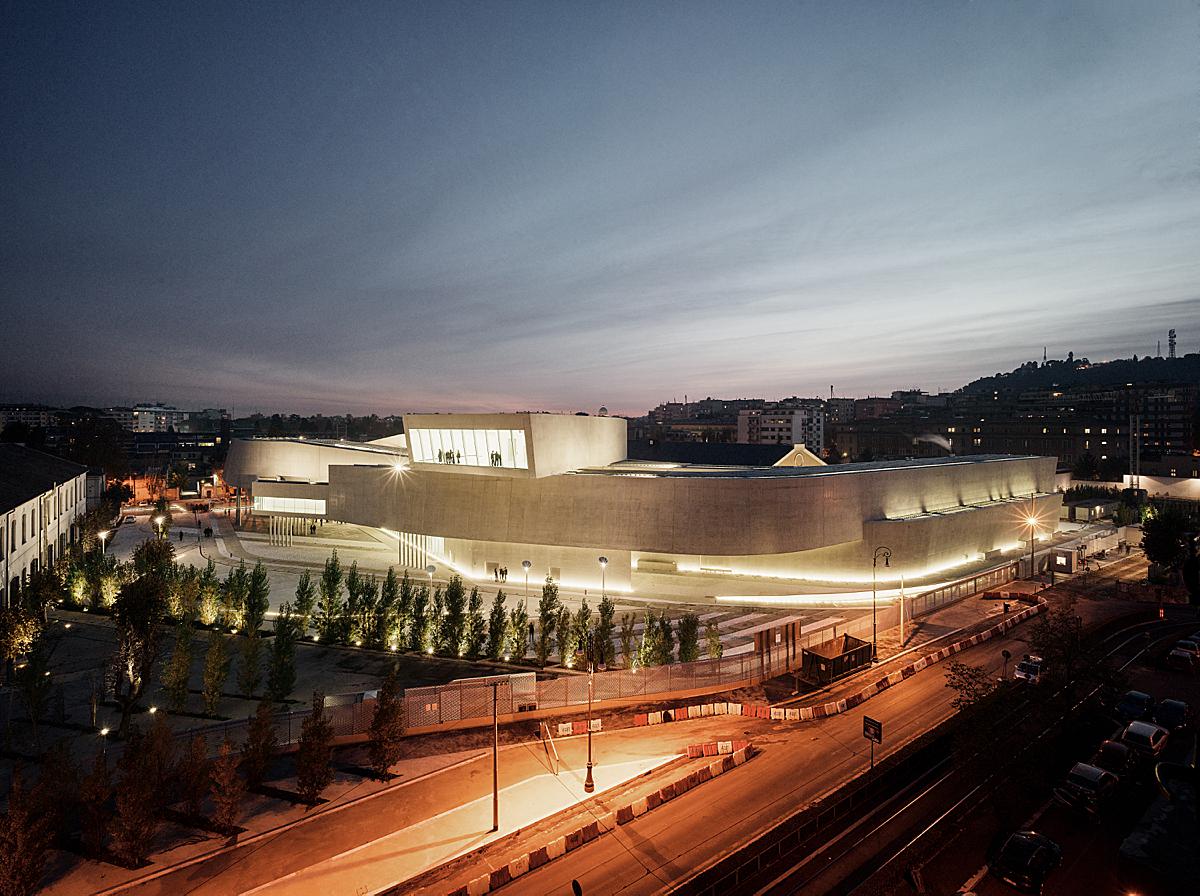Time Travel With Peter Bennetts to Check Out Zaha Hadid’s MAXXI Museum at Its Opening
Aussie architectural photographer Peter Bennetts has traveled far and wide making great photos of architecture — from Tuvalu to Finland, and everywhere in between — but today’s project takes us to Rome where we’ll find the MAXXI National Museum of 21st Century Art designed by Zaha Hadid’s Patrik Schumacher.
Here you can expect to see an intense array of lines, shapes, and textures, which Peter harnesses in his gorgeous and compelling compositions. Armed with an ALPA camera and Leaf digital back, Peter was commissioned to photograph the grand opening of the museum before any of the art was installed. So kick back, relax, and enjoy this beautiful set that really does let the architecture do all the talking!
Wow wow wow! Buckle up folks because you’re in for more of these bold and graphic shapes. There is just something so fun and captivating about the interior of this museum sans-art. Peter’s compositions emphasize the linear shapes and repeating forms. He shows us the museum in a way that feels wild and joyful.
I applaud Peter because I’m not totally sure I would even know where to start if I walked into MAXXI. There are so many great lines and interesting elements. I asked him “What were you looking for when making your compositions?”
His reply was “I always like to time before picking up the camera in earnest to come to an understanding of the buildings, the inherent ideas, its place in the history of the world and its response to its environment which includes not just climate but culture and it’s particular environs.”
I know all you medium format whizzes are lusting to know more about Peter’s ALPA.
He thoughtfully shares “I love the clockwork whir & click and the manual cocking of the lenses, they’re sounds that’ve been with me throughout my career. Originally I photographed architecture with a Sinar 4×5” camera before the ALPA SWA and my first Medium Format Digital Back a Leaf Aptus 22. The ALPA gave me the ability to be a lot more mobile and productive than 4×5 and a quality that exceeded it.
The ALPA and Leaf Back are fast to set up and portable — really no bigger than a pro DSLR. Obviously, they’re no good for fast successive shooting but a little like a Leica you can follow movement through the viewfinder and shoot in the moment. I think the discipline of having started with large format still informs what I do today. I have a theory that if something looks good upside down and back to front, as it appears in a view camera then it’s going to be really good when it’s the right way up and around.”
With that very good mantra, this series must have been a blast to shoot! Riddled with weaving lines and such punchy contrasting colors, I’d imagine these abstract forms would look good no matter what direction you viewed them!
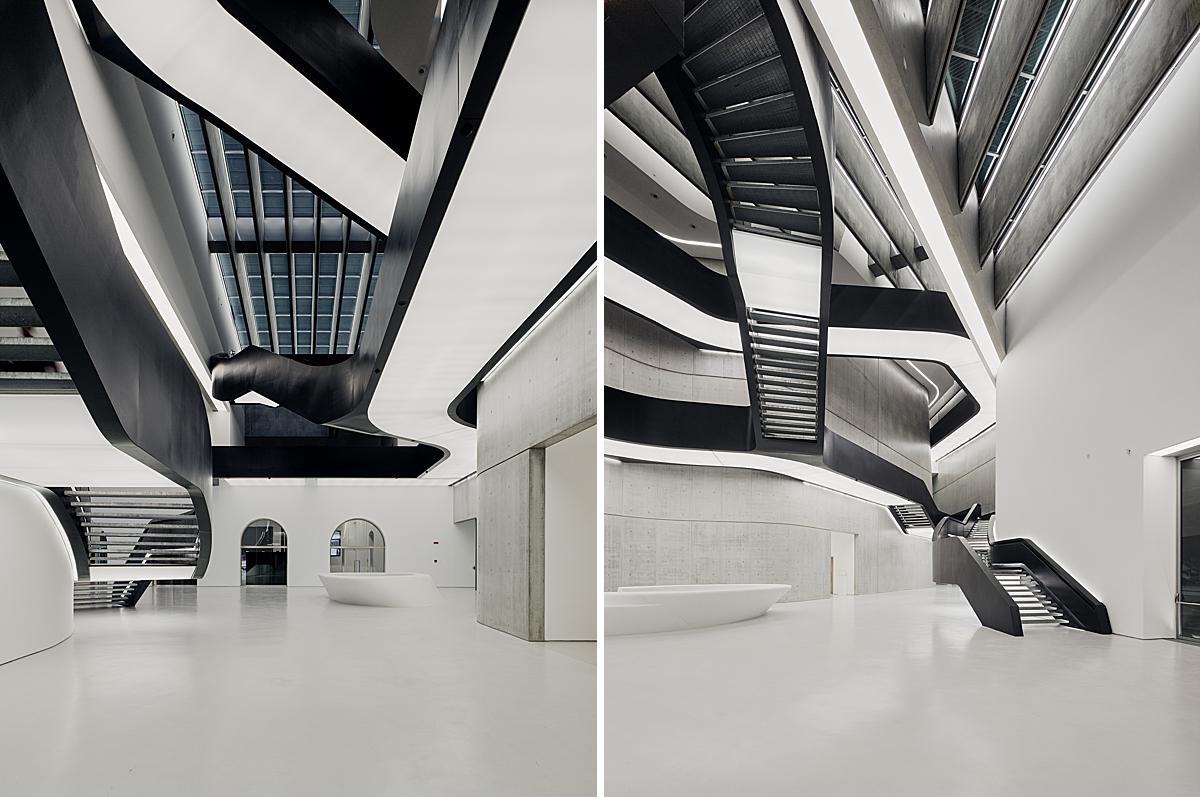
“I use Capture One and Photoshop,” explains Peter in regards to his post processing workflow. “I’m always frustrated with Capture One and their race to release new versions with more features when there are always glitches with the existing software. I love shooting with my Leica M10-P but C1 while it supports the lenses profiles they don’t work making the lens corrections when applied worse. I’ve been nagging them for years. Still it’s the best raw image processor have used it for 10+ years we know our way around! So C1 for a crop and straighten if any, pretty quick colour & levels balancing, run out as 16bit TIFF and the fine-tuning gets done in photoshop layers. My retoucher Angelina Macciaone is based in Milan so all the selected raw files get saved as EIPs and sent to her. EIPs contain an instruction set so Angelina can see where they’re at for crop, straightening and corrections.”
“For me [what makes this project unique is that] it’s Hadid’s best work, and the first realised of her flow-form buildings — an idea that had be burning in her since her competition-winning but unbuilt The Peak Leisure Club, Hong Kong” Peter explains. “Flow form, the MAXXI is not object, it’s more a field of buildings making an immersive urban environment. The intertwined galleries and stairs read as Rome’s rivers and streams.”
This image in particular evokes the feeling of those flowing rivers and streams for me. I love the errant curves and winding lines. There is such a great sense of movement and flow that Peter captures wonderfully.
Peter tells that one of his favorite images is as follows. He shares “I’m firstly interested in photographing the quality of space, after all it’s space that as humans we inhabit. While not the most dramatic of the images, this photograph distills the essence of the MAXXI and the space that’s been created for this nexus of architecture, art and culture. I’m less interested in photographing buildings as objects.”
Back outside, this tidy image of MAXXI’s exterior shows off its complex design and fantastic shape. Peter’s perspective highlights the repetitive lines and still has that sense of movement and excitement. I love the way we can see MAXXI’s surroundings and how different it looks from its “neighbors.”
Peter ends this Project of the Week with a lovely photo sporting an interesting story. He tells, “I remember particularly a fellow we met in the street who invited us up to his apartment to show us the view and had me back at dusk where I shot that last image overlooking the MAXXI with St Peters Basilica in distance. People are generally interested and accommodating, it’s amazing the unimagined possibilities that can be gleaned engaging with the neighbours!”
A huge Thank You to Peter for sharing these excellent photos with us! You can see more of Peter’s work on his website peterbennetts.com or on Instagram @peterbbennetts.
If you have a project you’d like to be considered for Project of the Week, you can submit it here.
